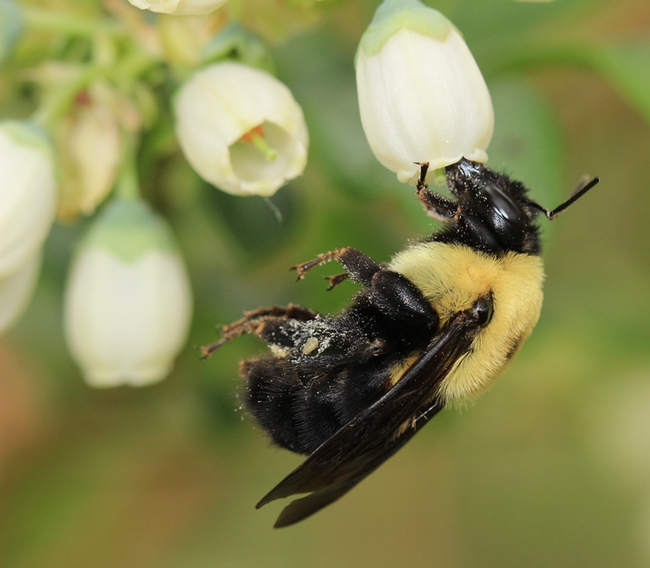- Author: Kathy Keatley Garvey
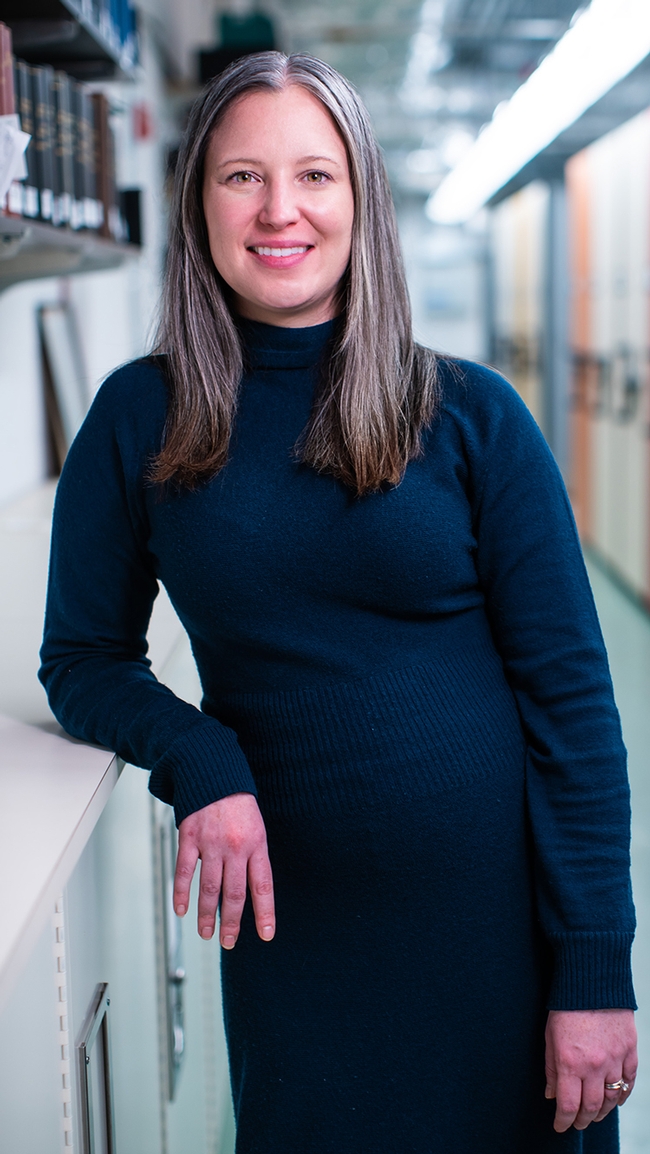
“However, the plants that are keeping up with climate change might also experience costs to earlier leaf-out,” said Meineke, lead author of the first-of-its-kind study, Phenological Sensitivity to Temperature Mediates Herbivory.
One of the costs is that “early” species get eaten more in warmer years. “This seems to be because when they leaf out earlier,” she said, “they also lengthen the amount of time herbivores have in a given year to eat their leaves.”
Two plant species that showed higher insect damage due to rising temperatures were two native blueberries: Vaccinium angustifolium, a wild lowbush blueberry native to eastern and central Canada and the northeastern United States, and Vaccinium corymbosum, the northern highbush blueberry, a native North American species and a significant commercial food crop.
The publication is the result of a massive five-year research project involving herbarium specimens collected from the northeastern United States and France from 1900 to 2015. These two areas have warmed more than the global average, Meineke said, and the plants studied are distributed widely across them.
Meineke, an assistant professor who joined the UC Davis faculty in March 2020, launched her research while a National Science Foundation postdoctoral fellow at the Harvard University Herbaria, where she studied how worldwide urbanization and climate change have affected plant-insect relationships over the past century.
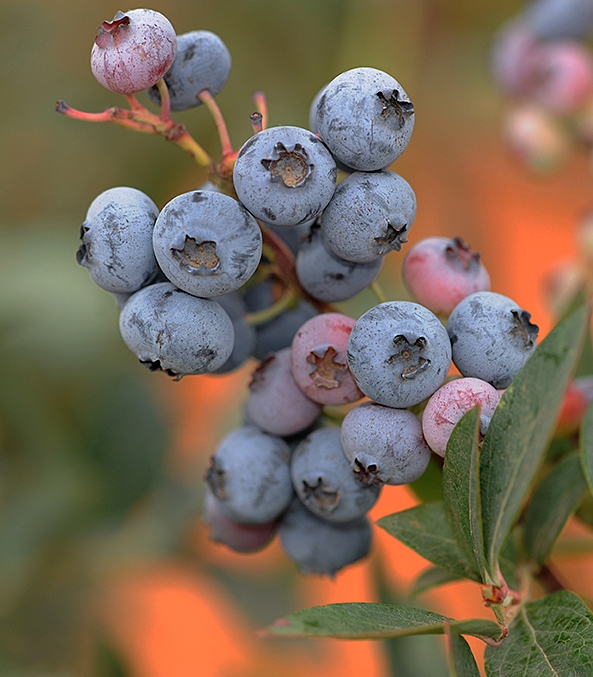
“This was a true collaboration,” Meineke said. “Each of us was interested in different pieces of the research. Davies and Davis brought the phenology hypotheses and expertise, and I brought an interest in/knowledge of herbivory and how it may change as the climate warms.”
The authors wrote that “both insect and plant development are sensitive to temperature, though the specific cues plants and associated insects use to time life history events may differ and include photoperiod, chilling, ‘forcing' and precipitation. For the vast majority of insect and plant species, the combined and relative contributions of these cues have not been well characterized.”
The specimens studied were selected first on the basis of the availability of previously published phenological sensitivity metrics: flowering sensitivity and leaf-out sensitivity. “We use the general term ‘phenological sensitivity' to refer to the extent to which a particular life event (e.g., for plants, budbreak, leaf-out, flowering, fruiting) responds to temperature from year to year (e.g. days change in phenology per ‘C' warming),” they explained.
The next step? “We are now beginning to look into whether and how herbivory might have shifted over time in California native plants,” Meineke said. “Our focal species so far is the valley oak, Quercus lobata, but we hope to eventually expand these observations to more taxa. We're also looking into other mechanisms that might drive herbivory shifts here in the west, where phenology is driven more by moisture than by temperature.”
A native of Greenville, N.C., Meineke holds a bachelor's degree from the University of North Carolina in environmental science, with a minor in biology, and a doctorate in entomology from North Carolina State University where she completed her dissertation, "Understanding the Consequences of Urban Warming for Street Trees and Their Insect Pests.”
The project was supported by a Discovery Grant from the Natural Sciences and Engineering Research Council of Canada. The material is based upon work supported by the National Science Foundation Postdoctoral Research Fellowship in Biology in a grant awarded to Meineke.
The abstract:
Species interactions drive ecosystem processes and are a major focus of global change research. Among the most consequential interactions expected to shift with climate change are those between insect herbivores and plants, both of which are highly sensitive to temperature. Insect herbivores and their host plants display varying levels of synchrony that could be disrupted or enhanced by climate change, yet empirical data on changes in synchrony are lacking. Using evidence of herbivory on herbarium specimens collected from the northeastern United States and France from 1900 to 2015, we provide evidence that plant species with temperature‐sensitive phenologies experience higher levels of insect damage in warmer years, while less temperature‐sensitive, co‐occurring species do not. While herbivory might be mediated by interactions between warming and phenology through multiple pathways, we suggest that warming might lengthen growing seasons for phenologically sensitive plant species, exposing their leaves to herbivores for longer periods of time in warm years. We propose that elevated herbivory in warm years may represent a previously under appreciated cost to phenological tracking of climate change over longer timescales.
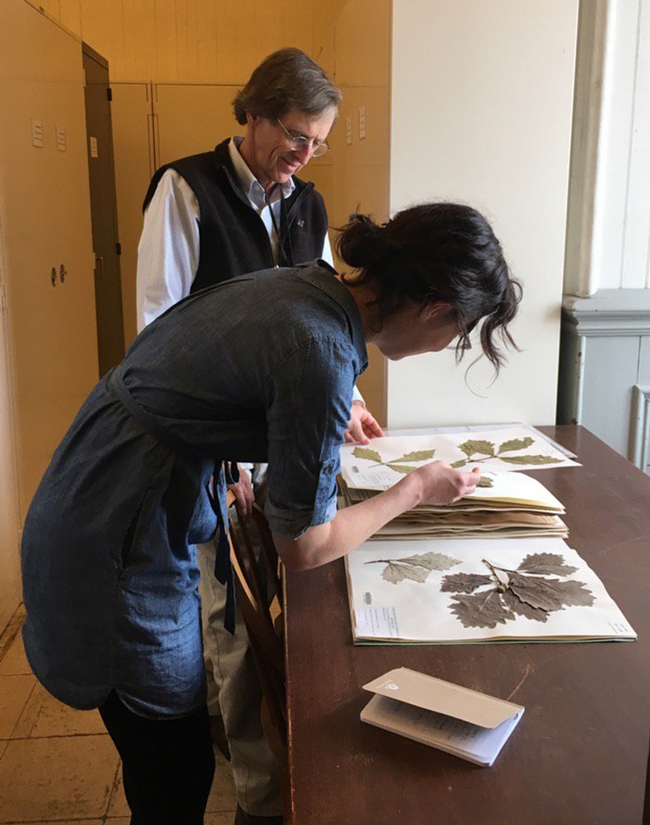
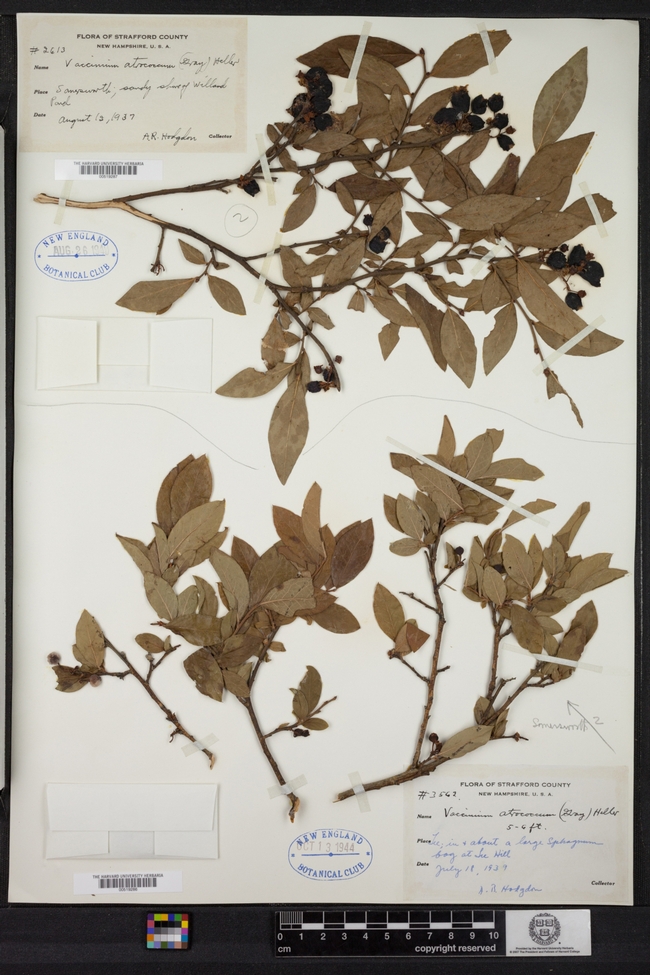
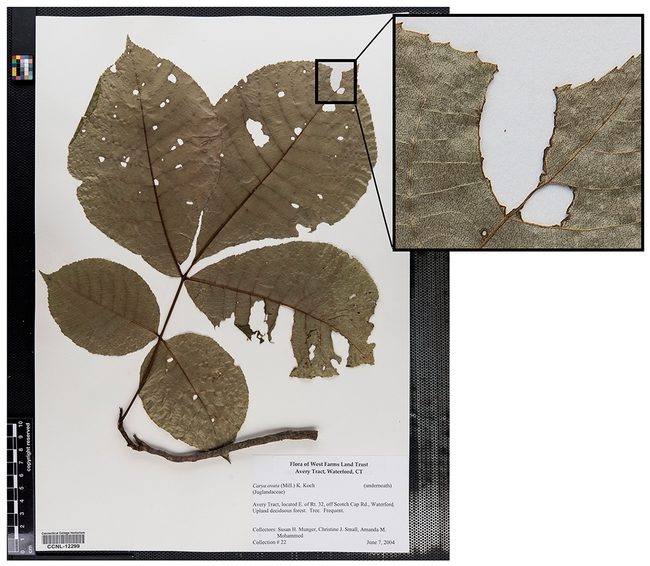
- Author: Kathy Keatley Garvey
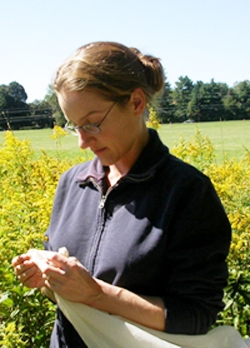
The researchers, led by Rachael Winfree of Rutgers University, New Brunswick, N.J. set out to answer the question “How many species do we need for crop pollination?”
They identified more than 100 species of wild bees pollinating watermelon, cranberry and blueberry crops on a total of 48 farms in New Jersey and Pennsylvania--the mid-Atlantic region of the United States.
The answer: “Not nearly enough bees are available for crop pollination,” Winfree said.
“We found that maintaining ecosystem services in nature requires many species, including relatively rare ones,” said Winfree, professor of ecology, evolution and natural resources. The publication, “Species Turnover Promotes the Importance of Bee Diversity for Crop Pollination at Regional Scales,” appears in the section, Ecology.
The ecologists first counted pollen grains of different bee species to measure bee pollination, tallied the number of bees and the different species pollinating the crops, and then figured out the minimum set of bee species that could meet various pollination needs. Finally, they plotted the cumulative number of bee species needed against the number of sites.
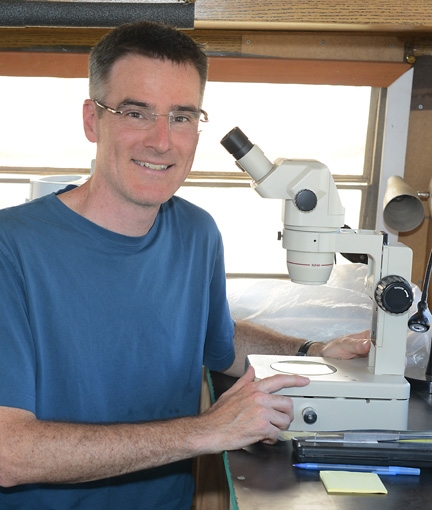
“So how many species do we need to ensure reliable crop pollination?” he asked. “The answer to this question helps us manage our agricultural and natural lands. Past studies suggest that often just a few bee species can do the job for any one site.”
The study, among the first of its kind, “reveals that when we look across multiple farm sites in a region, we need many more species than experimental studies have suggested in the past,” Williams said. “At one farm, pollination might rely on a handful of species, but across 40-50 farms in a region we need 10 times that number. This is because the most important species change from one place to another. “
So how many bee species are important to ensure crop pollination?
“More than we thought!” Williams said. “Working to promote bee diversity across regions is important for maintaining pollination and secure food systems.” The researchers counted 100 species of wild bees.
Winfree said previous experiments completed in the lab didn't answer the question: “How many bees do we really need?”
“When you have five (ish) bee species you get enough pollination,” she said “But there are only so many species you can even fit in an experiment. What we wanted to know is, how many bees do real farmers need to pollinate actual farms across an entire state?”
“Any one farm might need only a few species, but different bee species pollinate the different farms, so to pollinate all 50 (ish) farms we needed about 10 times as many species as are needed in smaller scale experiments,” Winfree said. “More than half of the 100 (ish) bee species we saw in the study were needed at some farm for some crop.”
Winfree, reiterating that “we need more bees than we thought,” said the issue is “important because many scientists are concerned that bees are in trouble. There is limited information on how most bee species are doing, but some of the species we do know about are declining. This work shows that preserving lots of bee species is important for food security.”
Other co-authors of the study are James Reilly of Rutgers; Ignasi Bartomeus of Rutgers but based at a biological station in Seville, Spain; Daniel Cariveau of Rutgers and the University of Minnesota; and Jason Gibbs of the University of Manitoba, Winnipeg, Canada.
A grant from the National Institute of Food and Agriculture (NIFA) of the U.S. Department of Agriculture funded the data collection research. Winfree conceived the study, oversaw the data collection, led the conceptual development and wrote the manuscript. Williams contributed to the conceptual development and manuscript preparation.
